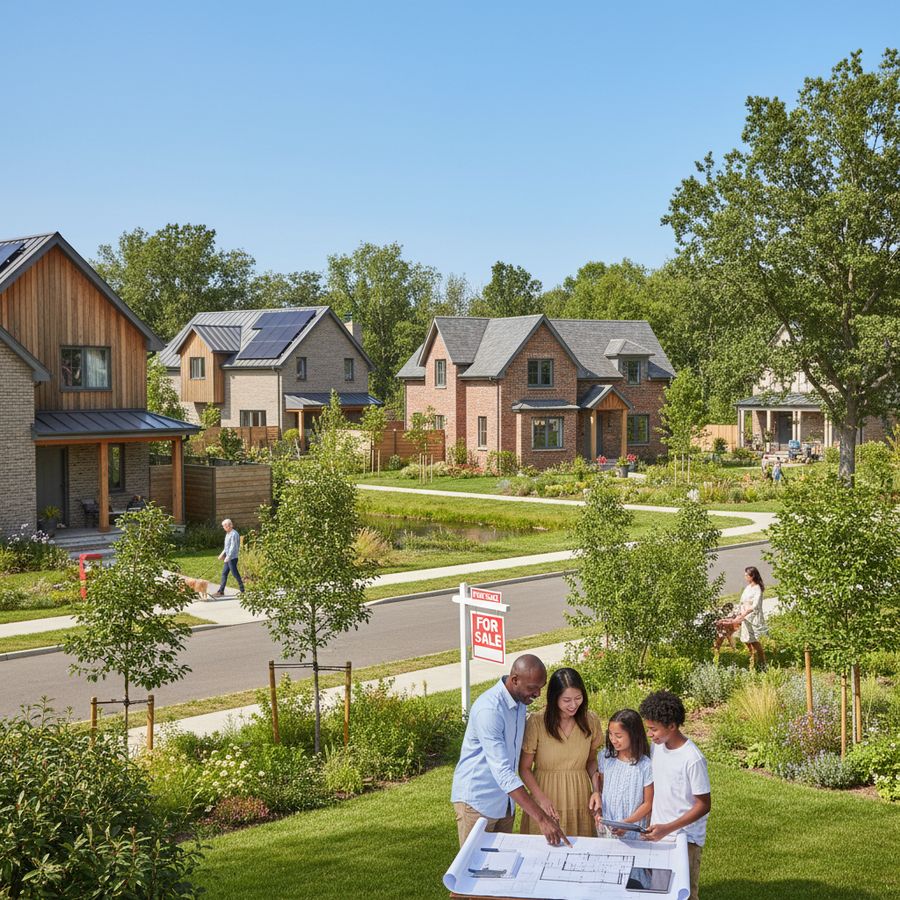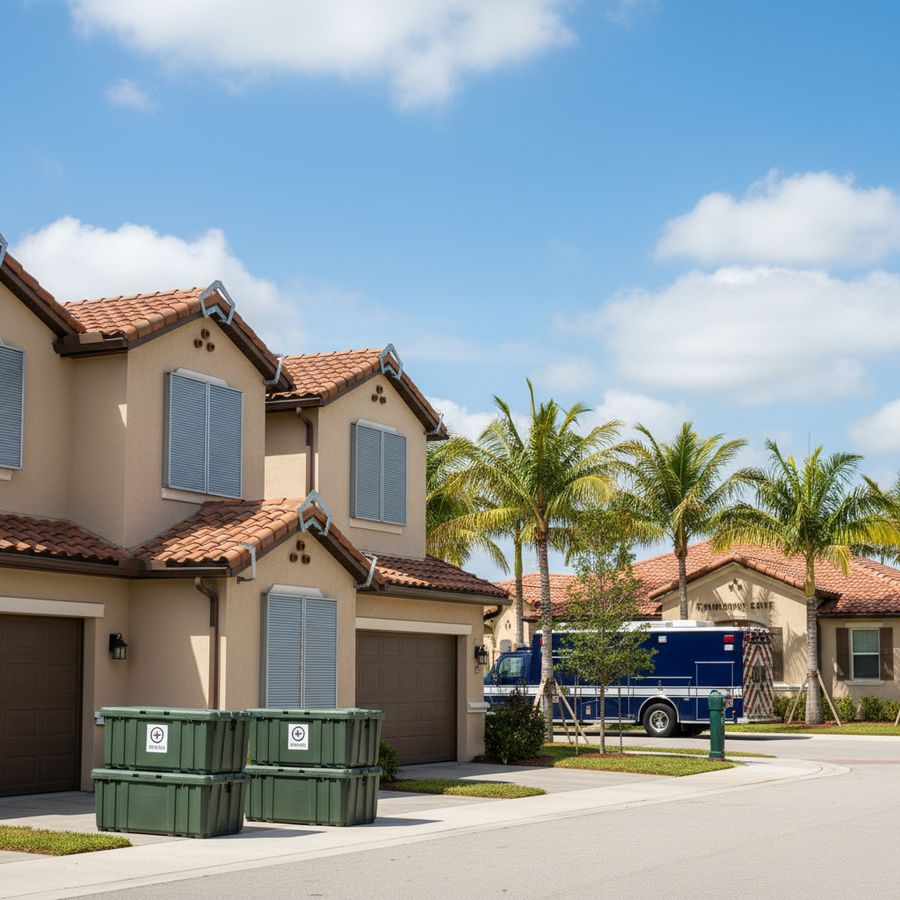How Location Influences Your Property Insurance Rates
Overview
Property insurance rates vary widely based on numerous factors, but one of the most significant determinants is the location of the property. Where a home or commercial building is situated can profoundly influence the cost of insurance premiums. Insurers assess the unique risks associated with specific locations to calculate the likelihood of claims, which directly impacts how much policyholders pay.
Location risk factors encompass a broad range of considerations, including environmental hazards, crime statistics, local building regulations, and proximity to emergency services. Each of these elements contributes to the insurer’s evaluation of potential losses and helps explain why two properties with similar features might have substantially different insurance costs simply because of where they stand geographically.
Understanding how location influences property insurance rates can empower homeowners and investors to make informed decisions. By recognizing the risks tied to certain areas, policyholders may explore ways to reduce premiums, such as reinforcing their property against specific threats or choosing coverage that aligns with local risks.
"Insurance companies use detailed geographic data to assess risk, making location one of the most critical factors in determining property insurance rates."
In this article, we will explore the various location risk factors that affect insurance premiums, including natural disaster zones, crime rates, differences between urban and rural areas, and the influence of local building codes. By delving into these aspects, you will gain a comprehensive view of why your property's location plays such a pivotal role in insurance pricing.

Regional Risk Factors
The regional characteristics of an area are vital in shaping the cost of property insurance. Insurers analyze historical data and environmental conditions to predict the likelihood of damage or loss in a particular region. These location risk factors can include climate patterns, geographical features, and man-made risks, all of which affect insurance premiums.
For example, properties located in regions prone to flooding, hurricanes, or wildfires generally face higher insurance rates. This is because these natural threats increase the probability of expensive claims. Conversely, areas with mild weather and low environmental risks tend to have more affordable property insurance rates.
Another regional factor is the availability and quality of emergency services. Homes in remote locations far from fire departments or hospitals might incur higher premiums since delayed emergency response can lead to greater damage. Similarly, regions with well-equipped and responsive emergency services often benefit from lower insurance costs.
Beyond natural and emergency factors, regional economic conditions can indirectly influence insurance rates. Areas experiencing economic decline or rapid development may see shifts in property values and claims frequency, which insurers incorporate into their risk assessments.
"The regional environment and infrastructure significantly shape the risk profile insurers use to calculate property insurance rates."
Ultimately, understanding the regional risk factors can help homeowners anticipate insurance costs and take proactive steps, such as improving property resilience or choosing appropriate coverage tailored to their area's risks.
Natural Disaster Zones
One of the most critical elements affecting property insurance rates is whether a property lies within a natural disaster zone. These zones are geographic areas known for frequent or severe natural hazards such as hurricanes, earthquakes, floods, tornadoes, and wildfires. Properties located in these zones typically face significantly higher insurance premiums because the likelihood of claims is elevated.
Insurance companies meticulously map out these zones based on historical disaster data and scientific predictions. For example, coastal regions vulnerable to hurricanes often require specialized natural disaster insurance or additional riders to standard policies, driving up costs. Similarly, homes in wildfire-prone areas may need extra coverage due to the increasing frequency and intensity of fires in some regions.
Flood zones are another crucial consideration—many insurers charge higher rates or require separate flood insurance policies because flood damage is costly and widespread. In many cases, government programs may assist with flood insurance, but private insurers still adjust premiums based on the property's flood risk.
It's important to recognize that natural disaster zones can change over time due to climate change, urban development, and changes in land use. This dynamic risk landscape means that property owners should regularly review their insurance policies to ensure adequate coverage matching the current risk profile of their location.
"Being situated in a natural disaster zone can drastically increase property insurance rates due to the heightened risk of costly damage."
Homeowners in these zones should consider investing in mitigation efforts, such as storm-proofing or fire-resistant materials, which may help reduce premiums. Understanding your property's exposure to natural disasters is essential for securing appropriate and affordable insurance.

Crime Rates and Insurance
Crime rates in a property's location are a significant factor that insurers consider when setting property insurance rates. Areas with high incidences of burglary, vandalism, and theft generally experience elevated premiums because the risk of property damage or loss is greater.
Insurance companies analyze local crime statistics and trends to assess how likely it is that a policyholder will file claims related to criminal activity. For instance, a home in a neighborhood with frequent break-ins may face higher insurance costs than a similar property in a low-crime area. This is true not only for homeowners’ policies but also for commercial property insurance.
Moreover, the presence of organized crime or gang activity can further inflate insurance rates due to the increased risk of damage and liability. Insurers also consider the effectiveness of local law enforcement and community safety programs as mitigating factors that can reduce premiums.
Policyholders can often negotiate better rates by demonstrating enhanced security measures such as alarm systems, surveillance cameras, deadbolt locks, and neighborhood watch participation. These improvements reduce the insurer’s risk and may qualify homeowners for discounts.
"Higher crime rates in a location translate directly into increased property insurance premiums due to the potential for theft and vandalism."
Understanding the impact of crime rates on your insurance can help you take strategic actions to protect your property and reduce costs, making it a crucial factor in managing your insurance expenses effectively.
Urban Vs Rural Premiums
The distinction between urban and rural locations plays a notable role in determining property insurance rates. Generally, urban areas tend to have higher insurance premiums compared to rural locations, but this relationship is nuanced and depends on various risk factors specific to each setting.
Urban properties often face increased risks associated with higher population density, such as greater crime rates, increased fire hazards, and potential for accidental damages. Additionally, urban areas may experience more frequent claims related to water damage from plumbing or construction activities.
Conversely, rural properties might benefit from lower crime rates and less exposure to some types of hazards, which can translate into lower insurance costs. However, rural homes might be more vulnerable to other risks like slower emergency response times, increased wildfire risk, or limited access to fire hydrants, which could increase premiums.
The availability of local infrastructure, such as reliable water supply for firefighting and proximity to hospitals, also influences the premium differences between urban and rural areas. Insurance companies weigh these factors carefully when evaluating risk.
"The urban-rural divide impacts property insurance rates through differences in crime, emergency response, and environmental hazards."
For homeowners and investors, understanding these distinctions can help in choosing the right insurance coverage and in implementing risk mitigation strategies tailored to their property's setting.
Local Building Codes
Local building codes are an often overlooked but crucial factor influencing property insurance rates. These codes dictate construction standards, materials, and safety requirements that properties must comply with in their respective locations. Properties built or renovated to meet stringent building codes typically enjoy lower insurance premiums because they are less susceptible to damage.
For example, areas prone to hurricanes may require buildings to have reinforced roofs, impact-resistant windows, and elevated foundations. Compliance with these codes reduces the potential for damage during storms and consequently lowers the insurer’s risk. Similarly, earthquake-prone zones may mandate specific structural reinforcements that help mitigate seismic damage.
Insurers view properties that adhere to or exceed local building codes as safer investments. This confidence often results in discounts or more favorable insurance terms. On the other hand, older homes or buildings not up to current code standards may face higher premiums due to increased vulnerability.
Staying informed about local building regulations and investing in code-compliant improvements can be a smart way to control insurance costs. Additionally, new construction projects that incorporate advanced safety features and sustainable materials can benefit from more competitive rates.
"Compliance with local building codes is a proactive way to reduce property insurance rates by minimizing damage risks."
Property owners should consult with insurance agents and local authorities to understand how building codes in their area impact insurance costs and explore opportunities to improve their property's risk profile.
Conclusion
The location of your property plays a crucial role in determining property insurance rates. Insurers evaluate a variety of location risk factors, including regional environmental risks, natural disaster zones, crime rates, and the distinctions between urban and rural settings, alongside local building codes.
Understanding these factors enables property owners to make informed choices about insurance purchases, risk mitigation, and potentially lowering premiums. By investing in property enhancements that meet local safety standards, improving security measures, and grasping the specific risks linked to your property's location, you can effectively manage insurance costs.
While you can't alter your property's location, you can shape how insurers view your risk by remaining proactive and informed. This insight is vital for securing comprehensive protection at a reasonable price. For more information on how to navigate your property insurance needs, visit Property Insurance.
"Location is more than just an address; it is a crucial component of your property's insurance risk and cost."
Reacties
Een reactie posten